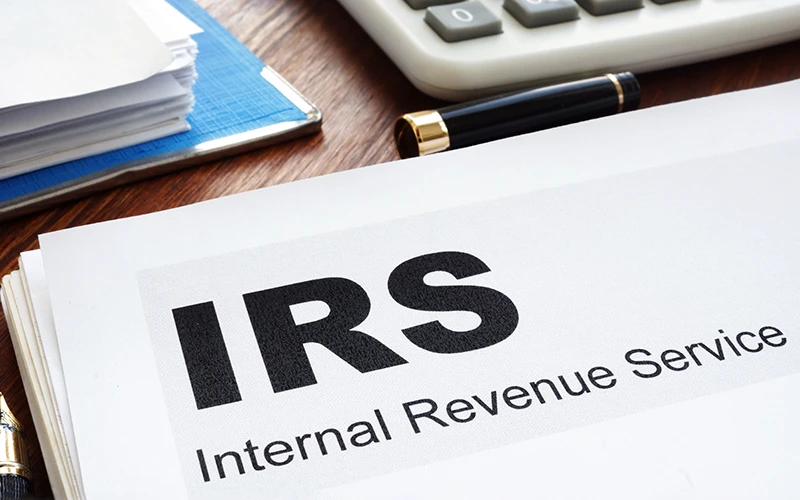From the Detroit Free Press — By Susan Tompor —
Hard to imagine anyone just ignoring an IRS letter that flags a potential trouble spot involving fraud or ID theft. Or taxpayers not making a move to prove they are who they say they are to get their tax refund cash.
Last year, though, millions of taxpayers never responded to letters from the Internal Revenue Service requesting that they authenticate their identity before the IRS can release their federal income tax refunds, according to a new blog by the National Taxpayer Advocate.
More than 2.5 million federal income tax returns remained suspended at the end of last year because taxpayer identities had yet to be authenticated, according to the advocate’s blog.
Didn’t receive your refund yet? Suspected ID theft — and ignoring those IRS letters — could be behind the holdup. Maybe the very letter you need to get the ball rolling is sitting on top of your desk or kitchen counter.
National Taxpayer Advocate Erin Collins is urging taxpayers to take a second look at any ID-theft related letters sent to them by the IRS last year or even in 2021 and take time to respond to resolve the problem.
Collins also wants to see the IRS to streamline what’s now a complex process and make letters less confusing. “The IRS should assist taxpayers throughout the process to reduce the burden for those properly filed tax returns,” Collins noted.
The IRS is tasked with screening tax returns to prevent crooks from falsely filing returns to steal tax refund cash. Unfortunately, many legitimate tax filers can face headaches when their returns end up being flagged.
As part of the initial ID theft screening process, the IRS computer systems review tax returns when they’re filed to spot unusual signs that could indicate fraud, including matching wages and income to determine whether the legitimate taxpayer submitted the return.
“In general, we’re dedicated to ensuring taxpayers get the refund they’re entitled to but we have to balance that with protecting taxpayers from being victims of identity thieves,” said Luis Garcia, a spokesperson for the IRS.
Why did the IRS just send me a letter?
If the return shows signs of potential identity theft, the IRS won’t process the tax return or send the refund. Instead, the IRS then sends a letter to the tax filer asking them to first authenticate their identity and certain information.
Admittedly, if you receive one of these letters, your first reaction might be to toss it aside. If you open it, you might not always be able to understand what you’re reading. Taxpayers might receive various types of letters dubbed with assorted IRS jargon: Letter 5071C, which indicates that a federal income tax return was filed under your Social Security number or individual taxpayer identification number; Letter 4883C; Letter 5447C; and Letter 5747C.
Even if you go through the process and are able to verify your ID, you’re being warned that it could take up to nine weeks to receive your federal income tax refund or see any overpayment of money credited to your account. And things could be delayed even further if the IRS spots another problem and needs to contact you again.
Why do I need to verify my ID with the IRS?
Many people need to first open that mail to find out what they need to do next to get their refunds, according to Cecily Welch, a member of the IRS Advocacy Relations Committee for the American Institute of CPAs.
Welch, a CPA in Georgia, said taxpayers need to realize that the IRS has made significant improvements — which might not be immediately obvious — at dealing with the verification process. One client, she said, faced the issue in 2018 and it took about 18 months to resolve. Now, she said, it takes far less time.
“Yes, the letters could use some improvement,” Welch said, “but there are specific tools to contact the IRS on how to get it resolved. It’s not straightforward. It’s not going to be easy. But it’s two hours instead of two years.”
The taxpayer typically needs an Internet connection, access to the documents needed and patience to go through the process. “It is not turnkey. It is not quick. You do have to be diligent,” Welch said.
“We, of course, would love for it to be more streamlined,” Welch said, adding that the IRS is making some consistent steps toward that.
In the past, she said, taxpayers couldn’t seek help from their tax professionals to address the verification process. Now, if you’ve got a power of attorney for a third party to represent you before the IRS, the tax professional can help address the issue.
More information is online, too. As of late January, the National Taxpayer Advocate’s blog noted, taxpayers who receive a letter asking them to authenticate their identity and return information online can go into their online IRS account, which will tell them they need to verify information on their tax return before it can be processed. The taxpayer is directed to the Identity and Tax Return Verification Service website, which answers a variety of questions about what you need to do next.
Open the letter from the IRS
More taxpayers need to be aware, Welch said, that they must look out for potential delays with their refunds, such as letters that will request that they verify their ID. They need to understand upfront that tax refunds can be held up because IRS fraud filters prevented the return from being processed.
“We’re all human,” Welch said. “You get a letter from the IRS and it usually doesn’t instill confidence. It scares people, not by intent. It’s just you get a letter from the IRS, you don’t open it. It sits on your counter forever because you’re worried about what it says.”
The IRS isn’t able to move forward with the refund without the taxpayer taking action, though.
The IRS form letter will outline some of the potential issues, tell you what information you need to have available when you respond to the IRS, and tell you how to respond. You might be able to use an online option or call the IRS directly. In some limited situations, you’re going to be asked to make an appointment at a Taxpayer Assistance Center and authenticate your identity in person.
Last year, Collins noted in her blog, the IRS stopped processing 4.8 million tax returns because of concerns about potential ID theft. About 2 million taxpayers responded to letters to authenticate their IDs. Nearly 255,000 returns in that group ended up being confirmed as real attempts by crooks to steal refund cash by using identity theft to file fake tax returns.
If you think you received a letter but cannot find it, you can check your IRS online account or call the IRS taxpayer protection hotline at 800-830-5084. The IRS notes that tax filers who live outside of the United States should call 267-941-1000. These numbers are only for identity and tax return verification. No other information, including refund status, is available.
One reason the IRS isn’t getting some responses: Maybe the crook gave up.
If the return was filed by an identity thief, the blog noted, it’s possible the crook has abandoned their attempt to obtain a fraudulent refund after receiving a letter asking to verify what is actually a fake ID.
At the same time, though, the blog noted that it’s possible a legitimate taxpayer “never received the letter, may have moved, didn’t understand the letter, or couldn’t get through on the IRS’s phone line to authenticate their identity.”
It can be hard to get through an IRS phone line. The level of service on the taxpayer protection hotline was only about 31% for fiscal year 2023, as of Aug. 5, according to Collins.
Many people, Collins said, particularly taxpayers who speak English as a second language, find the IRS letters and verification process complex and confusing, based on conversations with personnel involved with the Low Income Taxpayer Clinic. See www.taxpayeradvocate.irs.gov/litc for information on how to find help.
When I tried to read some of the online guidelines for understanding these IRS letters, I couldn’t imagine that many people could easily understand what’s expected of them. Some guidelines now even explain a pilot program to modernize the letters but, frankly, those explainers are confusing, too.
Where’s my refund? No clue for some
Clearly, more needs to be done to smooth out the process. ID theft isn’t going away but legitimate taxpayers shouldn’t face as many hurdles as they do, either.
The “Where’s My Refund?” tool at IRS.gov — which taxpayers are using when they’re wondering what happened to their refund — doesn’t address ID theft-related issues. It would make a great deal of sense if it did in some fashion. The IRS has agreed to make some changes but has not done so yet. The blog noted: “The IRS has committed to devoting some of the Inflation Reduction Act of 2022 funds to roll out several enhancements by next filing season to enhance the usefulness of the tool to taxpayers.”
To fight the problem early on, Welch said the AICPA has been encouraging people to voluntarily request an IP PIN — or Identity Protection PIN — from the IRS to protect themselves from tax-related identity theft. It is a confidential six-digit number issued each year by the IRS that is used when you file your taxes and it can prevent someone else from using your Social Security number to file a fake tax return. Taxpayers first must take the necessary steps to request an IP PIN from the IRS.
By using this IP PIN on the front end, Welch said, taxpayers won’t see their tax returns caught up in the potential identity theft fraud triggers in the IRS system.
Another potentially positive step: The IRS started a pilot program that sends several versions of the same type of letter asking taxpayers to authenticate their identities. The goal is to figure out which version is more likely to get a response from taxpayers.
I guess it’s a start, right? But if you’re looking for your refund, it’s not a bad idea to open that letter that arrived out of the blue and has been just sitting there for weeks or months.
Contact the Pinnacle CPA Advisory Group
If you need any type of professional accounting services, please contact our experts at the Pinnacle CPA Advisory Group. Reach us by calling our office at (614) 942-1990, sending email to info@cpaagi.com, or by filling out the Contact form on this website at cpaagi.com/contact.


